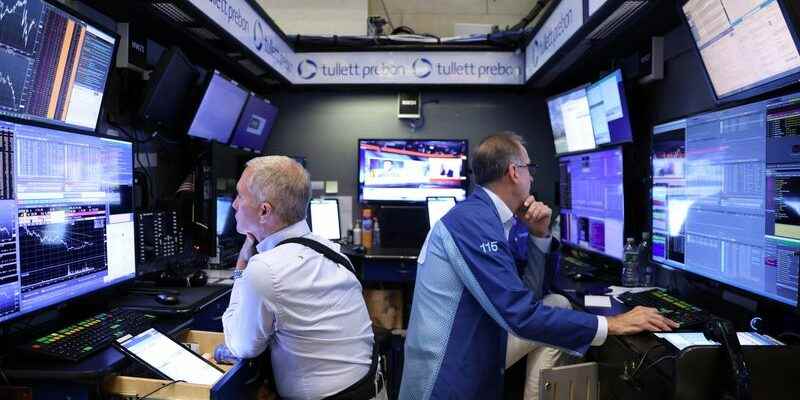For weeks, investors have wondered if the markets have taken the full measure of the Fed’s hawkish stance, after the central bank had already hiked rates by 225 basis points this year, and many had forecast a another 75 basis point hike when it meets next week.
Tuesday’s higher-than-expected inflation report – which sent stock and bond prices plummeting – reinforces the arguments of those who argue that the central bank will have to be much more hawkish than expected in the coming weeks. This is forcing investors to prepare for a potentially larger dose of Fed tightening, which has rattled asset prices all year.
The closely watched CPI report showed that US consumer prices rose unexpectedly in August, at an annual rate of 8.3%, not far from the four-decade peak reached in June.
“The Fed was already on a tightening path in the coming months and now it really needs to increase it given this report,” said Matthew Miskin, co-head of investment strategy at John Hancock Investment Management. “It’s rather negative in all areas for the markets.”
Federal funds futures now price around a 36% chance that the Fed will raise its benchmark rate by a full percentage point next week.
The market reaction was swift: the benchmark S&P 500 index ended down 4.3% on Tuesday and the tech-heavy Nasdaq fell 5.2%, the largest single-day declines for both indexes since June 2020. Yields on the benchmark 10-year US Treasury bond, which move inversely to bond prices, hit 3.46%, their highest level in about three months.
Growing expectations for the Fed’s hawkish stance is an unwelcome development for a market already facing uncertainty on multiple fronts, from concerns about whether the central bank’s fight against inflation will lead to a recession to the knock-on effects of higher real yields on asset prices.
In September, the Fed will also accelerate the unfreezing of its balance sheet to $95 billion per month, a move that some investors believe could increase market volatility and weigh on the economy.
THE HOPES OF “PIVOT” DUE
Even the time of year is a source of concern for some: The S&P 500 fell an average of 0.5% in September since 1950, the worst monthly performance for the index, according to the Stock Trader’s Almanac. So far for the month, the index is down 0.6%; for the year, it is down more than 17%.
Tuesday’s inflation report added pressure on a rebound that had seen the S&P 500 rise 17% from its mid-June low. Stocks have now lost nearly half of those gains.
It also dampened some optimism that the Fed could soon “pivot” to a looser monetary policy, the hope of which has periodically helped support risky assets.
“Any imminent Fed pivot is not ahead of us and this data point confirms that,” said Matt Peron, director of research at Janus Henderson Investors. “The market has gotten a little carried away over the past couple of weeks with the story of peak optimism.”
Further declines in equities and bonds promise further pain for investors who had relied on a panorama of both asset classes to cushion market declines.
So-called 60/40 portfolios – which hold 60% of their assets in stocks and 40% in bonds in anticipation that declines in one asset class will lead to gains in the other – are down more than 12% since then. at the start of the year, their worst performance since 1936, according to BofA Global Research.
Of course, many investors have been preparing for more volatility after an already turbulent year so far. Fund managers increased cash balances 6.1% in September, the highest level in more than 20 years, according to BofA Global Research’s monthly survey released on Tuesday.
“The key question is when is the Fed confident enough to know it’s done enough. Clearly we’re not anywhere near that point now,” said Ed Al-Hussainy, senior global rates strategist. at Columbia Threadneedle. “On the risk asset side, I think there is more damage to be done.”
